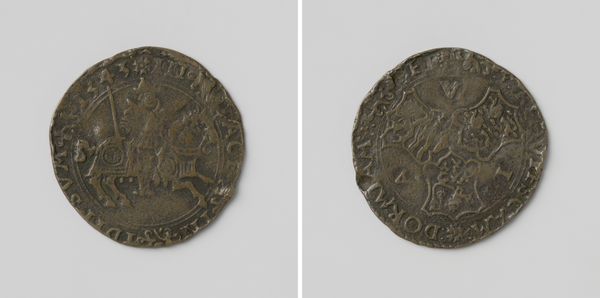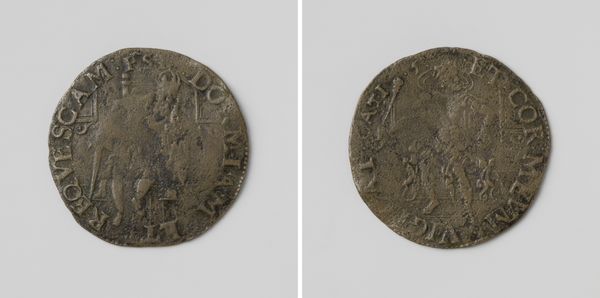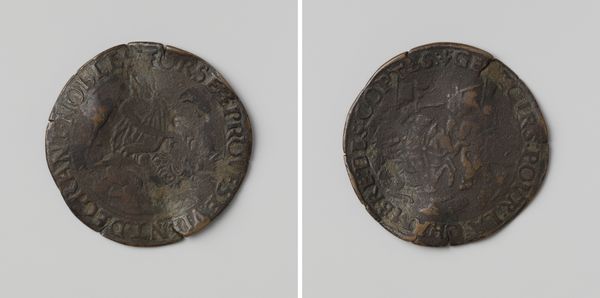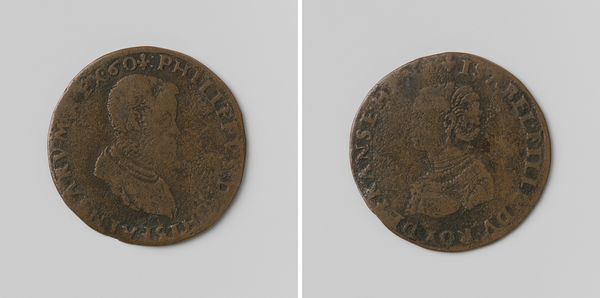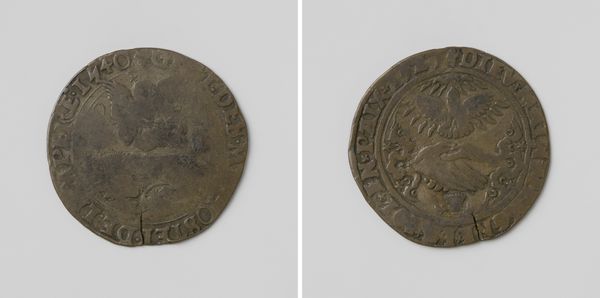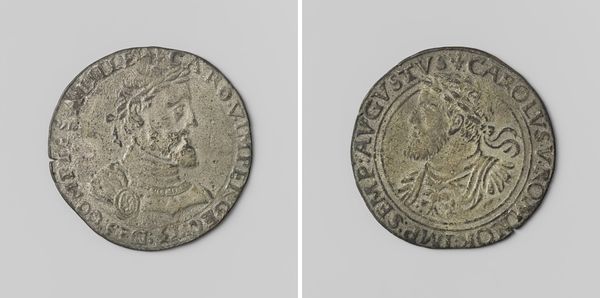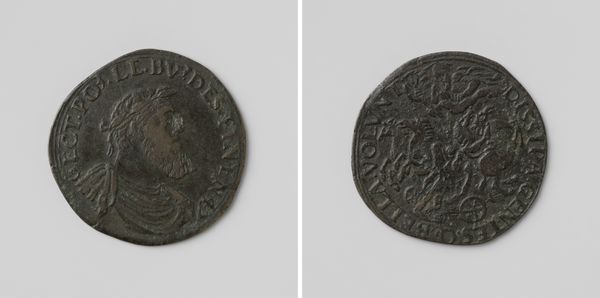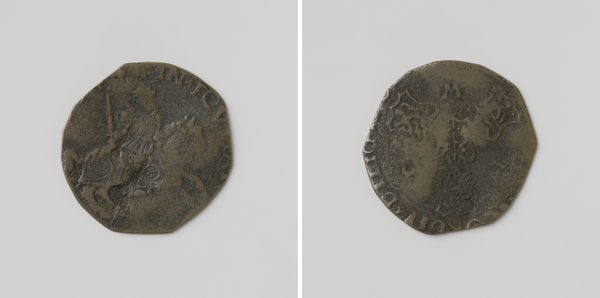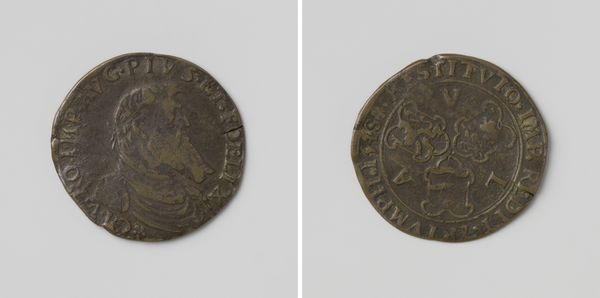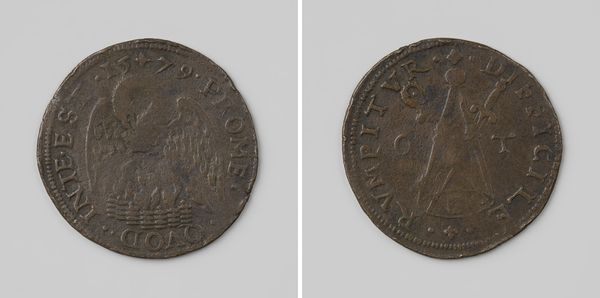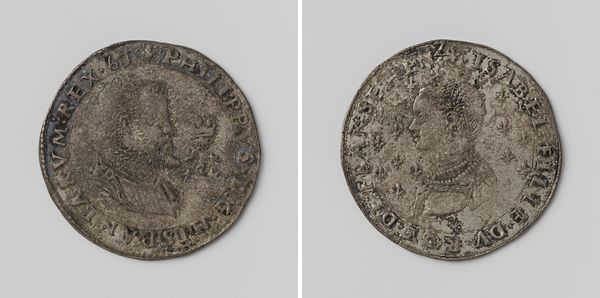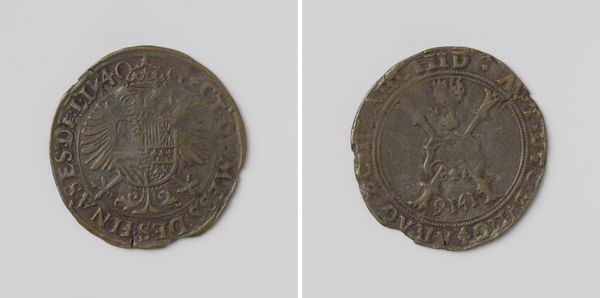
Verdrag van Venlo tussen Willem II, hertog van Gelre, Gulik en Kleef en Karel V, Duits keizer, rekenpenning ten behoeve van Mr. Vincent Dammasz., klerk-ordinaris van de rekenkamer van Holland te 's-Gr 1543
0:00
0:00
print, metal, bronze, engraving
#
portrait
#
medieval
# print
#
metal
#
sculpture
#
bronze
#
history-painting
#
engraving
Dimensions: diameter 2.7 cm, weight 3.42 gr
Copyright: Rijks Museum: Open Domain
Editor: Here we have a bronze rekenpenning, or counting medal, from 1543, commemorating the Treaty of Venlo. It involves Willem II and Karel V. It seems quite small and unassuming. What stands out to you about this piece? Curator: Its smallness is deceptive. It represents significant material investment. Consider the bronze itself, its sourcing, smelting. Then the labor – the die-making, the striking of each individual medal. Who benefited from this production? Not just the commissioners but also the artisans. The inscription suggests Mr. Vincent Dammasz., an official, owned it. What status did this token confer to its owner? Editor: That's interesting! So, it's not just about the historical event, but about the entire economic and social context of its creation? Curator: Precisely. Think about how these materials circulated. This medal connects the mines providing the ore to the clerks doing the king’s work. It challenges our view of historical “importance.” A battlefield usually eclipses things such as this medal, but doesn't its survival into our era show us a fuller historical story? What did these medals do besides signify history, who owned them, who made them and where? Editor: So it's about shifting our focus from the grand narrative of treaties and rulers, to the everyday materials and labour involved? Curator: Exactly! The object reveals systems of power in play beyond simply the portrait of Charles V, it is the economy of commemoration, it embodies these systems of production. These objects of accounting also served to elevate their masters. Editor: I never thought a small metal coin could be so revealing of social and economic processes. Curator: That's the power of materialist analysis – finding the story in the making and consumption of art. The making and use is very much part of the art's importance, and perhaps one that we sometimes ignore when discussing pieces such as this.
Comments
No comments
Be the first to comment and join the conversation on the ultimate creative platform.
